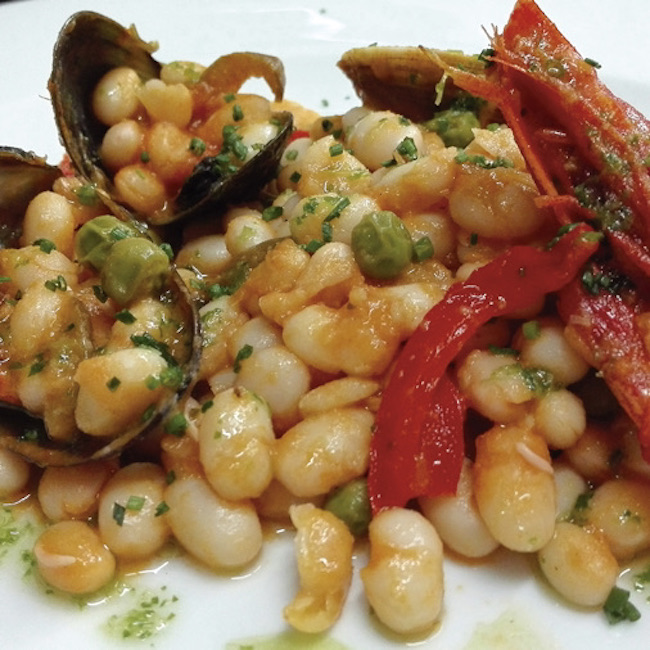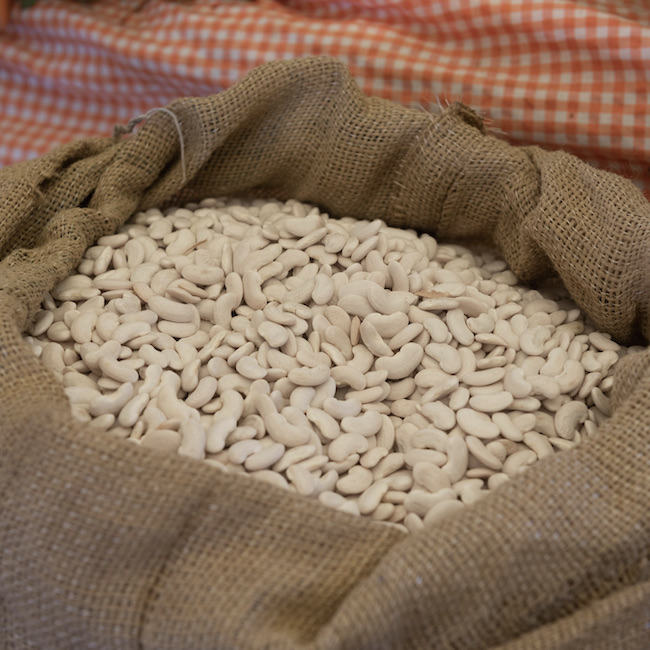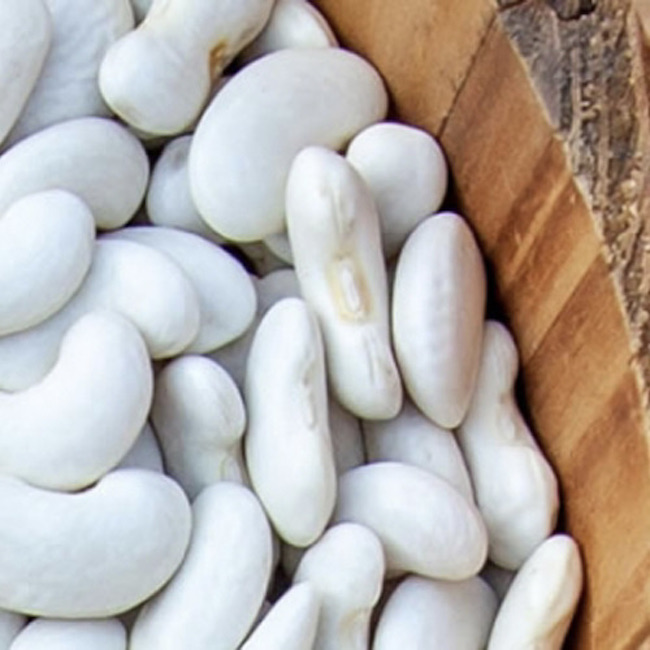.png.transform/rendition-xs/image_image%20(1).png)
Catalonian PDO Legumes: A Must-Try Culinary Gem
'Fesols de Santa Pau' and 'Mongetas del Ganxet' are two relatively unknown small-production beans with Protected Designations of Origin from Catalonia. Their unique growing conditions and stellar qualities make them true standouts among Spanish legumes
Catalonia is home to countless gastronomic delicacies. From pa amb tomàquet (bread with tomato) and escalivada (roasted vegetables) to calçots (grilled green onions) with romesco and butifarra (a typical Catalan sausage), this region has a distinct culinary culture, even within Spain.
But as is often the case, there are usually other absolutely stellar but less famous products that deserve more screen time. This includes the fesol de Santa Pau and the mongeta del Ganxet—two regional beans with Protected Designations of Origin and whose unique qualities make them a staple in local households.
What makes Santa Pau beans special?
The fesols de Santa Pau are grown in the town of Santa Pau, in the Garrotxa area of Catalonia’s Girona province. These beans have distinct characteristics which are primarily attributable to two factors.
According to Lluís Suñer, president of the Fesols de Santa Pau PDO Regulatory Council, the first is “the volcanic soils where they’re grown. Known as allophane, this soil retains and liberates nutrients very well, giving rise to very fertile soil. It also has the ability to retain sufficient humidity, which is ideal because fesols de Santa Pau are dry farmed.”
The second factor is the area’s microclimate. Its location, at the foothills of the Pyrenees and 45 kilometers from the Gulf of Roses, creates ideal growing conditions for fesols de Santa Pau.
Fesols are small, round, protein-packed beans with a very rough, wrinkly skin that essentially disappears once they’ve been cooked. Their most noteworthy qualities are their creamy, smooth flavor, which is reminiscent of chestnuts, and their buttery texture.
They’re available both dry, pre-cooked, and canned, and they don’t absorb the flavor of the other products with which they’re prepared, which allows them to retain their characteristic flavor.
 Fesols de Santa Pau a la marinera - Restaurant Can Xel (Fesols de Santa Pau DOP)
Fesols de Santa Pau a la marinera - Restaurant Can Xel (Fesols de Santa Pau DOP)
What makes Ganxet beans so unique?
The mongetas del Ganxet, affectionately referred to as “white caviar,” are grown in Catalonia’s Vallès, La Selva, and Maresme counties. “This area is suitable as it has a coastal and pre-coastal climate, and these beans don’t need too much heat or cold,” according to producer Manel Olivares from Mas Jaume Colomer, in Canovelles, Barcelona.
The medium-sized beans are similar to the fesols de Santa Pau in that they have a subtle flavor and a slightly rough, thin skin. Their exceptional creaminess makes them the perfect addition to dishes where the goal is to highlight the other ingredients, and the skin is imperceptible when cooked. As they have a low starch content, they are light in texture and are quick and easy to cook. They’re also low in fat and high in protein.
As for the future of these beans, Manel says that “the number of producers has declined in the last 10 years and the future is uncertain. In all likelihood, a specialized farmer will maintain production. Efforts have been made to plant seeds in other areas but the climate was not suitable.”

‘Fesols’ and ‘mongetas’ in current-day cooking
Unsurprisingly, these unique beans are very popular among the best Spanish chefs. At Michelin-star restaurant Can Bosch, the father-son chef duo serves fesols de Santa Pau with crunchy pigs’ feet.
Victor Torres, the chef at Michelin-star restaurant Les Magnolies as well as Quirat, at the Hotel Intercontinental Barcelona, has a dish that never fails to thrill his guests: foie in escabeche served over a bed of fesols de Sant Pau.
Albert Raurich is another chef for whom fesols de Santa Pau are an important product. At his restaurant, Dos Pebrots, he combines these delicious beans with clams for a unique mix of Mediterranean flavors.
Catalan chef Carme Ruscalleda is an enthusiastic fan of mongetas, which she incorporates into many of her dishes. One of her leading recipes is turnip, cabbage, cod, and mongeta del Ganxet. Nandu Jubhany also prepares a delicious dish featuring these beans with cod.
At Michelin-star restaurant Els Casals in Barcelona, they serve it as part of a surf and turf: black butifarra sausage, spinach, cod tripe, and mongeta del Ganxet.
Chef Javier Muñoz Calero, from Ovillo restaurant in Madrid, learned about these singular beans from Ruscalleda, and has incorporated them in the most creative of ways by pairing them with his award-winning callos (tripe).
And returning to this bean’s native land, Terrasa, the Michelin-star duo behind Taverna del Ciri offers multiple and unique creations: a mongeta del Ganxet hummus and mongeta del Ganxet with pork jowls.

Versatile beans
Although these beans are not widely appreciated beyond Spain’s borders due to limited production, the locals certainly know how to celebrate them.
There are multiple gastronomic festivals that revolve around them, when restaurants prepare their very best dishes with fesols and mongetas, they’re featured on chef competition TV series, and they’re used by chefs in cooking contests.
And, safe to say that just about anyone who tries them is won over by the unique organoleptic qualities of these singular beans from northeastern Spain.

